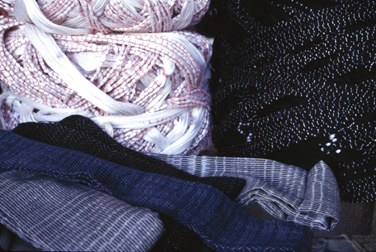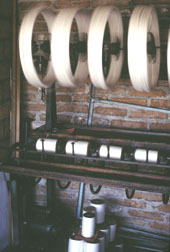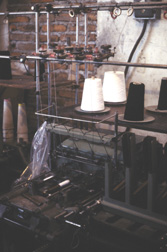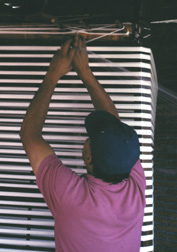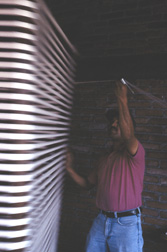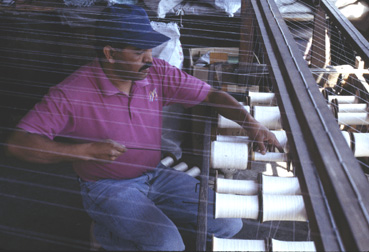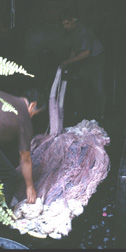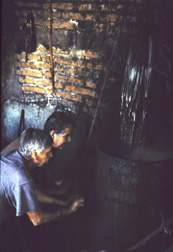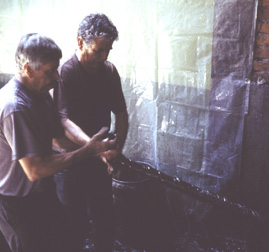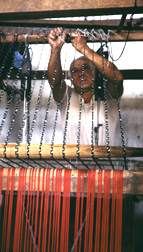| Only a few small establishments still produce ikat - dyed, foot-loom woven shawls in Moroleon and Uriangato, in the state of Guanajuato, Mexico. Ikat is a dying technique that allows the warp to be selectively colored before it is woven. A shrinking market and competition with industrially woven cloth has forced many weavers to stop their production. The shawls pictured below are 100% cotton. | ||||
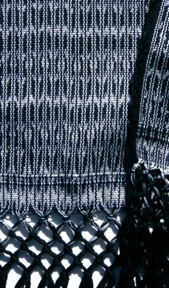 |
 |
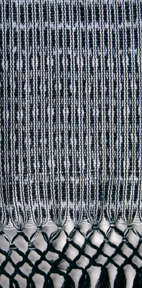 |
 |
 |
